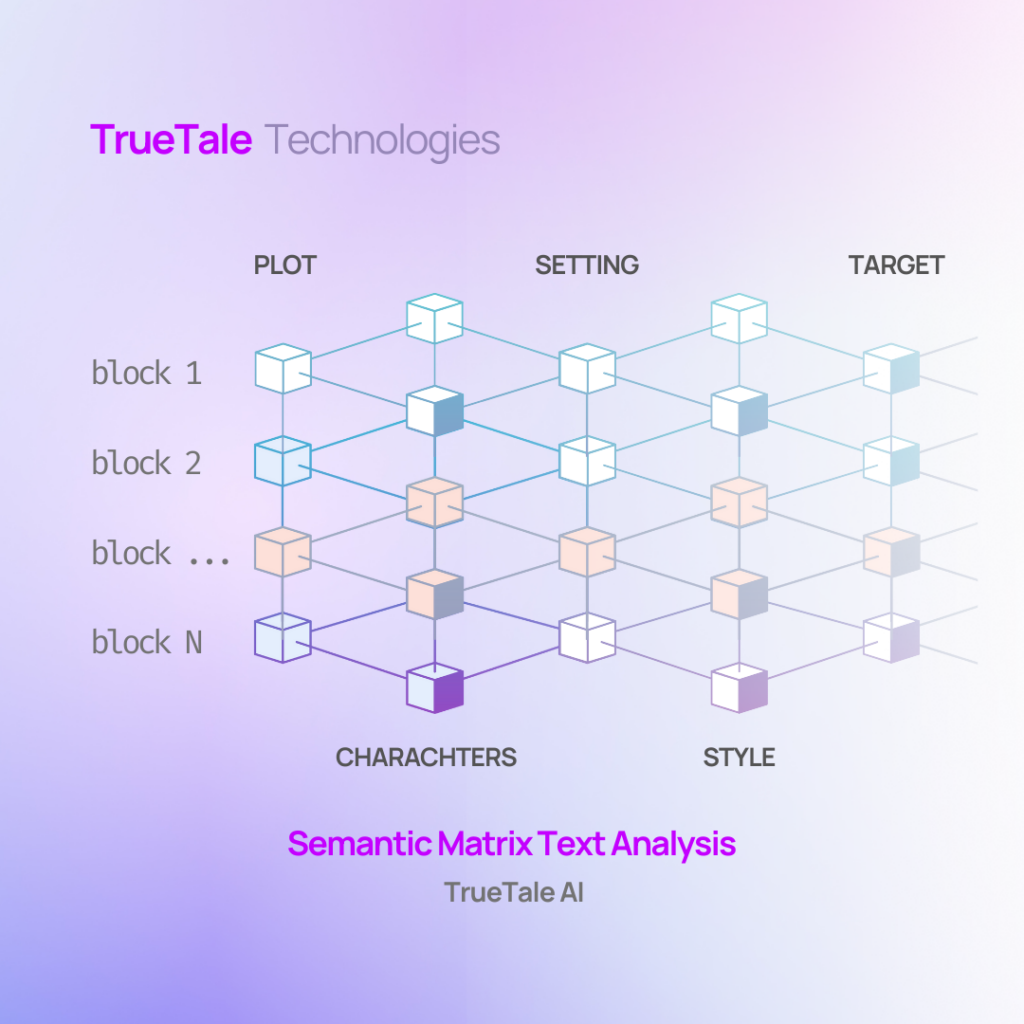Welcome to the first installment of our new review series, where we take a deep dive into contemporary bestsellers, examining them with the same impartiality and rigor as any other work – whether celebrated worldwide or yet to be discovered. Our AI-driven analysis offers an unfiltered perspective, evaluating narrative structure, character depth, and thematic impact without external bias.
We begin this journey with The Midnight Library by Matt Haig, a novel that blends magical realism with existential philosophy. Through the lens of our AI-generated review, we’ll explore how Haig’s story of alternate lives, regrets, and self-acceptance resonates with readers and whether it lives up to its widespread acclaim.

The Midnight
Library
by Matt Haig | United Kingdom
This is the review generated directly by our AI without any moderation or external intervention. Our AI has been trained to process any text without external influences – even the most renowned titles – evaluating literary masterpieces with the same rigorous standards and impartiality that it applies to unpublished works.
Abstract
The Midnight Library by Matt Haig is a thought-provoking novel that explores themes of regret, choice, and self-acceptance through the journey of Nora Seed, a woman who finds herself in a mystical library between life and death. Overwhelmed by despair, Nora attempts suicide but instead awakens in the Midnight Library, where she is given the opportunity to explore alternate versions of her life based on different choices she could have made. Guided by her childhood librarian, Mrs. Elm, she navigates a series of parallel lives, each revealing new insights about happiness, fulfillment, and the nature of regret.
Throughout her journey, Nora inhabits lives where she is an Olympic swimmer, a rock star, a glaciologist, and a philosophy professor, among others. Each life presents its own challenges and disappointments, leading her to realize that no existence is perfect. Along the way, she meets Hugo Lefèvre, another traveler between lives, who helps her understand the mechanics of the multiverse. The turning point comes when she experiences a life where she has a daughter, Molly, and feels a deep sense of love and responsibility. However, she ultimately understands that she cannot fully inhabit a life she has not lived from the beginning.
As the Midnight Library begins to collapse, symbolizing her imminent death, Nora makes a decisive choice to return to her original life. She awakens in her real body, seeks help, and begins to rebuild her life with a newfound appreciation for its possibilities. Reconnecting with her brother Joe, mentoring a young student, and visiting the real Mrs. Elm, she embraces the uncertainty of life with hope and self-acceptance. The novel concludes on an uplifting note, reinforcing the idea that happiness comes from within and that every life holds infinite potential.
Plot Review
The Midnight Librarypresents a compelling and emotionally resonant narrative that effectively blends elements of magical realism with existential philosophy. The novel’s structure, centered around Nora’s exploration of alternate lives, is both engaging and thought-provoking. Haig skillfully uses the concept of the Midnight Library as a metaphor for regret and choice, creating a framework that allows for deep introspection while maintaining narrative momentum.
The pacing of the novel is generally well-balanced, with each alternate life offering a fresh perspective on Nora’s regrets and desires. However, some transitions between lives feel abrupt, making it difficult for the reader to fully immerse themselves in each scenario before moving on to the next. A more gradual progression between these lives could enhance emotional engagement and allow for deeper exploration of each reality.
One of the novel’s strengths is its ability to make complex philosophical concepts accessible. Haig integrates discussions of quantum physics, the multiverse, and existentialism in a way that feels personal rather than academic. However, at times, the exposition-heavy dialogue between Nora and Mrs. Elm disrupts the narrative flow. A more subtle integration of these themes through Nora’s experiences rather than direct conversations could improve the novel’s impact.
The climax, in which the Midnight Library begins to collapse as Nora realizes she wants to live, is both thrilling and emotionally cathartic. The imagery of burning books and the crumbling library effectively symbolizes the destruction of her regrets. However, the resolution – where Nora wakes up and immediately seeks help – feels slightly rushed. A more gradual reintegration into her real life, with greater emphasis on how she applies her newfound perspective, could have made the ending even more powerful.
Despite these minor critiques, the novel succeeds in delivering a profound and uplifting message. Haig’s ability to weave existential philosophy into a compelling narrative makes The Midnight Library a standout work in contemporary fiction. The novel encourages readers to reflect on their own lives and choices, ultimately offering a sense of hope and empowerment.
Character Review
Nora Seed
Nora is a deeply relatable protagonist whose emotional trajectory from despair to a renewed sense of self-worth provides the novel’s central arc. At the beginning of the story, she struggles under the weight of her regrets, a sense of failure, and an overwhelming belief that her life has little meaning. This mindset propels her into the surreal realm of the Midnight Library, where she is given the chance to see what might have been had she made different choices.
The authenticity of Nora’s transformation lies in the nuanced way her emotional evolution is portrayed: it never feels forced or abrupt. Instead, each alternate life she explores offers a glimpse into her innate resilience, gradually dissolving her initial resignation. Nevertheless, her passivity in the early chapters may deter some readers, who could find it challenging to connect with a character seemingly adrift. Introducing more subtle signs of agency during these initial pages – moments where she quietly questions her circumstances or takes small steps toward change – might have helped solidify a stronger foundation for her later growth. Despite this, Nora’s eventual shift toward self-acceptance and hope is profoundly affecting, underscoring why she stands out as one of Haig’s most compellingly drawn characters.
Mrs. Elm
As Nora’s guide through the Midnight Library, Mrs. Elm offers a calm, guiding presence that contrasts Nora’s inner turmoil. Acting as a mentor figure, she gently nudges Nora toward introspection and understanding, asking probing questions that illuminate the complex layers of Nora’s regrets. Her demeanor carries a soothing reassurance, suggesting that no matter how dire one’s circumstances may appear, there is always an opportunity for reflection and change.
While Mrs. Elm’s wisdom and unwavering support are central to the narrative, her own motivations and history remain somewhat enigmatic. Offering glimpses into her personal regrets or backstory could have added an extra dimension to her role, making her guidance feel even more profound. Nevertheless, her function as a symbol of mentorship and kindness is undeniable. By maintaining composure in a place that exists outside normal parameters of time and space, Mrs. Elm embodies the idea that compassion can be a powerful anchor when navigating life’s uncertainties.
Ash
Ash’s role in the novel exemplifies the potential for a life steeped in warmth, stability, and genuine affection. He appears as a gentle presence in Nora’s alternate paths, embodying the comfort and reassurance she longs for. In many respects, he serves as a glimpse of what Nora’s life could hold if she allowed herself to embrace love and security.
However, Ash remains underexplored, leaving readers with only a surface-level understanding of his inner world. While his gentle nature and quiet strength resonate, the novel offers only limited insight into his personal motivations, his deeper perspectives, or how he truly views his bond with Nora. A fuller examination of his background – what drives him, what he hopes for, and how he feels about Nora’s struggles – would not only have enriched his character, but also intensified the emotional stakes of their relationship. As it stands, Ash provides an appealing possibility in Nora’s tapestry of lives, yet there is room for greater depth that could have further drawn readers into his story.
Setting Review
The Midnight Library itself is a brilliantly conceived setting that serves as both a literal and metaphorical space for Nora’s journey. Its infinite shelves of books symbolize the limitless possibilities of life, each tome representing a pathway not taken, a life not lived. The vast, quiet expanse of the library, with its endless corridors and softly glowing lights, evokes a dreamlike ambiance, immersing Nora in an ethereal world between existence and oblivion. The scent of aged paper and the occasional flicker of dimming bulbs heighten the surreal experience, reinforcing the library as a transient realm of both knowledge and emotional reckoning. More vivid details about the library’s atmosphere could enhance its immersive quality, making it feel even more tangible and emotionally resonant for the reader. Its infinite shelves of books symbolize the limitless possibilities of life, but its physical description lacks sensory richness.
Target Audience
The Midnight Library is best suited for readers who enjoy introspective and philosophical fiction. Fans of novels that explore existential themes, such as Life After Life by Kate Atkinson or The Book Thief by Markus Zusak, will likely find this book compelling.
Additionally, readers who appreciate stories that delve into the nature of choices, personal growth, and self-acceptance will find much to resonate with in Haig’s work. The novel offers a unique blend of magical realism and contemporary philosophical inquiry, making it an excellent read for those who enjoy thought-provoking narratives.
The book also appeals to those looking for an uplifting yet deeply meaningful story. Its message of hope and the power of perspective makes it especially engaging for individuals seeking a fresh outlook on life’s regrets and possibilities.
Final Considerations
The Midnight Library is a well-crafted novel that successfully blends existential philosophy with an engaging narrative. Haig’s ability to balance deep philosophical themes with accessible and engaging prose ensures that the novel remains both thought-provoking and emotionally resonant. The book’s exploration of regret, alternate realities, and the search for meaning strikes a universal chord, making it a compelling read for a wide audience.
While some aspects of the execution could be refined – such as smoother transitions between lives and deeper character exploration – the novel’s core message is powerful and resonant. The emotional depth of Nora’s journey encourages readers to reflect on their own choices and appreciate the present, rather than dwelling on past regrets.
Ultimately, The Midnight Library leaves a lasting impression, offering an uplifting perspective on life’s complexities. By presenting a narrative that embraces imperfection and celebrates the possibility of change, Haig delivers a novel that is both inspiring and deeply human.
Pitch
“What if every regret you’ve ever had could be undone? “
Matt Haig’s The Midnight Library takes readers on a journey through alternate realities, where every decision opens the door to a new existence. Through the eyes of Nora Seed, we explore the intricate balance between desire, fulfillment, and self-acceptance.
Haig’s novel combines philosophy, science, and human emotion to craft a deeply relatable story that urges readers to rethink their perspectives on happiness. Each version of Nora’s life teaches us that perfection is an illusion, and true contentment comes from embracing life as it is.
A beautiful and thought-provoking narrative, The Midnight Library is a must-read for anyone seeking hope, introspection, and a reminder that every life holds limitless potential.
Final Score
Plot Score: 2,669 / 4,000
Character’s Score: 2,420 / 3,000
Setting Score: 2,225 / 3,000
Final Score: 7,314 / 10,000
Do you agree with this review?
Do you have a manuscript in the drawer and want to discover TrueTale’s verdict?
Send it [HERE] and let our impartial analysis evaluate your work with the same rigor applied to major bestsellers.









